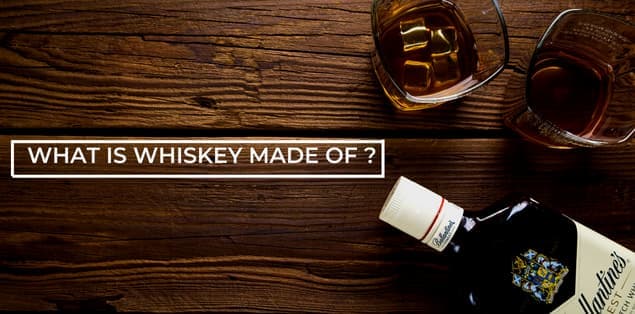So, what is whiskey made of? Distilleries have been producing whiskey for hundreds of years. However, the narrative of its creation isn’t as ancient as time.
It’s created all over the globe, and each region’s version is unique. Whiskeys created from different grains have distinct flavors and aromas. Bourbon is sweet and smooth, while Scotch is salty and smokey.
A beginner to whiskey may find it difficult to know where to begin since there is so much to learn about this beverage.
This whiskey article covers the fundamentals of the spirit, from its production to the ingredients different whiskey has.
So, without any further ado, let’s dive right in!
What Is Whiskey?
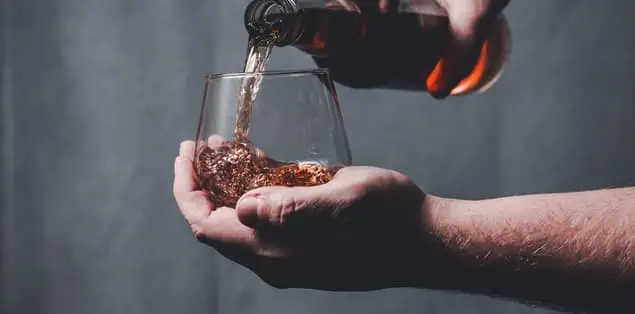
Whiskey, which you may also write whisky, is a distilled liquor that is amber in color and that manufacturers make from fermented grain. Manufacturers mature most whiskeys in oak barrels before bottling, and alcohol must comprise at least 40% of their total volume of alcohol (ABV).
There are various kinds of whiskey, which we often differentiate from one another according to their region of origin, types of grain, blending procedure, or the aging process. Each whiskey has its distinct taste profile. On the other hand, we often characterize whiskey as toasted, peppery, sweet, or caramel-like in flavor.
The words “uisce beatha” and “uisge beatha” in Gaelic are from where we get the term “whiskey.” These words imply “water of life.” In Latin, this phrase translates to “aqua vitae .”Whiskey was initially used in the medical industry, serving dual functions as a local anesthetic and an antibacterial agent applied physically.
History of Whiskey
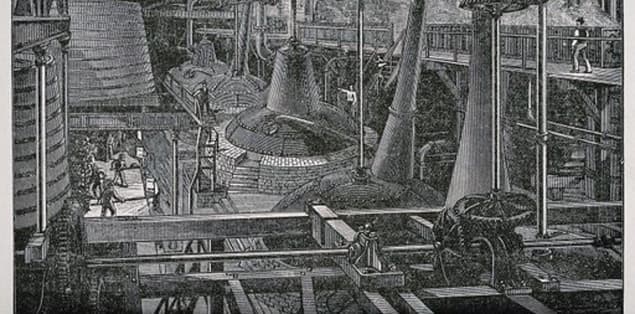
The distillation process was first introduced to Ireland and Scotland by monks, sometime between 1100 and 1300. Due to the difficulty in acquiring wine then, barley beer was distilled into a spirit that later became known as whiskey.
Apothecaries and monasteries were the only places that could legally produce distilled spirits until the late 15th century. It was via the immigration of Irish and Scottish people to the New Globe that someone introduced whiskey to the rest of the world. Whiskey is now widely consumed all over the world.
Even while different varieties of whiskey use somewhat different production techniques, all whiskey is, at its core, produced in the same manner. Whiskey production begins by mashing grains, often barley, maize, rye, or wheat. This process is quite similar to beer production. You can also malt certain of them, as with barley.
What Is Whiskey Made Out Of?
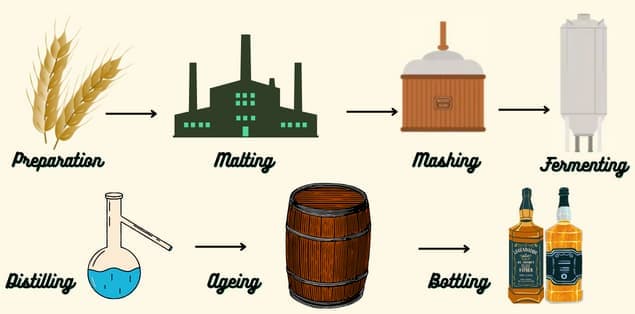
A few basic components make up a whiskey. They are as follows:
- Grain mash: Most of the process of creating alcohol starts with an agricultural product that will go through the process of fermentation. A fermentable whiskey foundation is often a combination of grains, such as malted barley, rye, maize, or wheat, which frequently determines the tastes and classification of the finished product. For example, the mash bill for rye whiskey must have at least 51% rye, but the mash bill for Kentucky bourbon must contain at least 51% maize.
- Water: Following the distillation process, whiskey producers would add water to the product to get the appropriate alcohol by volume.
- Additives: Whiskey sold in the United States may have up to 2.5% of additional flavors. We refer to any whiskey that does not include additional tastes as “straight.” During the distillation or aging process, many whiskey manufacturers opt to add botanicals, spices, flavorings, or color to establish a specific character or look in their alcoholic beverage.
- Time: After the distilling process, manufacturers mature the whiskey for a while in oak casks or barrels before being bottled. This helps the whiskey develop its many tastes and colorings. In the United States, the minimum time that manufacturers can age whiskey before selling it is two years. Nevertheless, many distillers age the spirit for around ten to twelve years.
During the fermentation process, manufacturers combine the grains with water and yeast. They make alcohol by converting the carbohydrates in the grain into sugars. Finally, the beer is passed through a still to produce high-density vapor. Manufacturers can do this in a pot still or continuous column still. At the end of the process, a high-proof liquid distillate is clear in appearance forms.
Nearly all whiskey is aged in oak barrels before it is released onto the market for at least a couple of years after distillation. This makes the liquor darker, adds a whiff of oak and wood taste, and smoothens out the harshness of the alcohol. After aging in barrels, manufacturers often dilute whiskey to the appropriate strength for bottling and then mix it with whiskey from other barrels or various types of whiskey.
Is Whiskey the Same as Scotch?
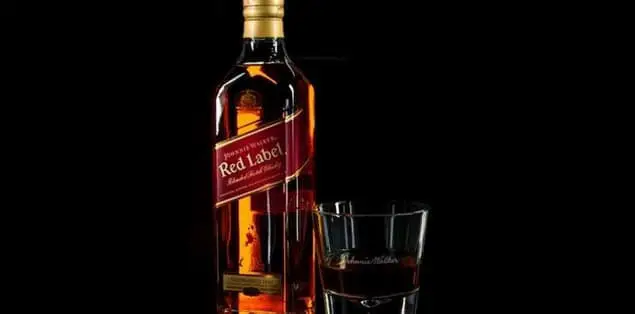
No, whiskey and scotch are different.
Here are the differences between scotch and whiskey:
Grains and Malts
Whiskey: The fermented grain mash is the starting point for making whiskey. To produce the distilled alcoholic beverage, malts produced from various grains, such as maize, wheat, barley, and rye, are combined and then aged in barrels made from charred white oak. Once it is bottled, whiskey does not continue to age in the same way that wine does.
Scotch: Scotch is a kind of malt whiskey produced in Scotland using just malted barley and water as the sole ingredients. Manufacturers need to mature Scotch whiskey for a minimum of three years. However, they often store it in oak barrels for eight to ten years or more, which helps to mellow out the flavor of this high-quality dark liquor flavor.
Production
Whiskey: Manufacturers often construct the ‘still’ (equipment used to mix fluids)used for creating whiskey of copper. That’s because this metal eliminates sulfur-based chemicals from the alcohol, which would otherwise render the beverage undesirable if consumed in its original form.
Scotch: Manufacturers can only produce a scotch in a single distillery and must make it following the law at all times. It can only be fermented properly by adding yeast, and the processing must take place in a distillery located in Scotland. It must be aged in wood barrels in Scotland, with no additional grains or other ingredients throughout the maturation process.
Maturation Process
The only thing differentiating whiskey and Scotch in terms of flavor is the maturing process; this is true regardless of the grains utilized. Because the flavor of the grains improves as they age, the alcohol gets smoother as it ages, and the color of the beverage changes to a golden hue as a result.
Even minute changes in the conditions in which manufacturers age the alcohol may significantly impact the finished product’s flavor. The flavor of the whiskey manufacturers aged in American white oak is different from whiskey aged in European oak. The former has a milder, more delicate scent than European oak, with a more powerful aroma and higher tannin content. And here is also where the costs vary from one another.
Blends
Whiskey: Makers create a blended whiskey by combining wide varieties of whiskey and spirits, each of which has a unique grain, color, and flavor profile. Whiskeys of a higher grade are often combined with spirits at a lower price to create this drink.
Scotch: The term “single malt scotch” refers to a kind of Scotch that makers have only produced at a single distillery. There are three distinct sorts of mixes that you may find in scotch whiskeys, and they are as follows:
- Blended Malt Scotch Whiskeys: This term refers to a kind of Scotch whiskey created by combining two or more single malt whiskeys from separate distilleries.
- Blended Grain Scotch Whiskeys: This term refers to blending two or more single grain scotch whiskeys from various distilleries.
- Blended Scotch Whiskey: This kind of whisky combines the first two types. This indicates that manufacturers have combined at least one single grain scotch whiskey and two or more single malt scotch whiskeys to create the final product.
What Is the Difference Between Bourbon and Whiskey?
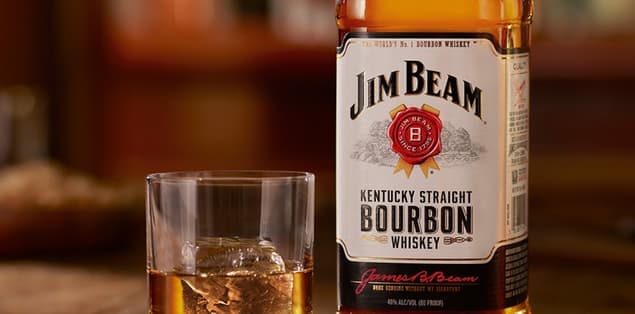
The distinction between Bourbon and whiskey may not be that clear to someone who does not regularly consume a significant amount of brown liquor. After all, Bourbon and whiskey are dark liquids and seem almost identical in color. Using “whiskey” to refer to Bourbon would not be inaccurate; however, it would increase the level of misunderstanding.
Like champagne, Bourbon is a subclass of the whiskey group like wine. Therefore, every whiskey is a kind of Bourbon, but not all Bourbon is a type of whiskey.
Production
Manufacturers use at Least 51% of corn in the production of Bourbon. The distillation process and the time they mature set Bourbon apart from other types of whiskey. Manufacturers produce whiskey by fermenting grain first, then aging the spirit in oak barrels. However, we can distinguish the wide varieties of whiskey by the kind of grains used and the barrels in which makers age them.
For the American Bourbon Association to recognize a whiskey as Bourbon, makers must distill it from a mash of at least 51% maize for the whiskey to meet the requirements of this category. Unfortunately, the Bourbon’s signature sweetness comes from the maize used in its production.
Aging Process
Bourbon’s aging process always occurs in brand new charred oak barrels. In addition, manufacturers must mature Bourbon in freshly charred oak barrels. However, it must not include any colorings or additions of any kind. For example, the aging process for whiskeys that are not Bourbon may occur in casks used in the past to age other types of spirits.
These casks do not necessarily have to be whiskey barrels since makers employ port, sherry, and rum casks in this procedure. To qualify, straight bourbon makers must age whiskey for at least 2 years in freshly burnt oak barrels. This is the only way the spirit may earn this designation.
Alcohol By Volume
When makers put Bourbon into barrels, it must also reach a specified proof, which refers to the amount of alcohol in the spirit. For example, they must distill the mash at a proof of 160 or less (equivalent to 80% alcohol by volume). Then, makers must mature it in barrels until proof of 125 or less (equivalent to 62.5% alcohol by volume).
The Bourbon reaches a minimum of 80 proof after it has been filtered and watered down before bottling (40% alcohol by volume). Different percentages of alcohol by volume (ABV) are considered acceptable for barreling and distilling various types of whiskey. There is no limit or minimum alcohol by volume for the distillate.
Scotch whisky, for example, must be bottled at least 80 proof, or 40% alcohol by volume.
Place of Origin
You may have heard that its production must take place in Kentucky for a whiskey to be called Bourbon. That is not entirely accurate; you can produce Bourbon in locations other than that state. However, for referring to the spirit as “Kentucky bourbon,” it must be produced and matured in Kentucky.
Even the word “bourbon” originates from ancient Bourbon, now present in what is known as Bourbon County in Kentucky. Although makers don’t produce all Bourbon in Kentucky, they produce most of it, which is why the state has become synonymous with the spirit.
This is analogous to how the Champagne region in France has become synonymous with champagne, even though sparkling wine can be produced in other regions using comparable methods. So when you order a bourbon the next time, you will know that the whiskey poured into your glass is not just any sort of whiskey, but a particular kind of whiskey.
What Is Japanese Whiskey Made Of?
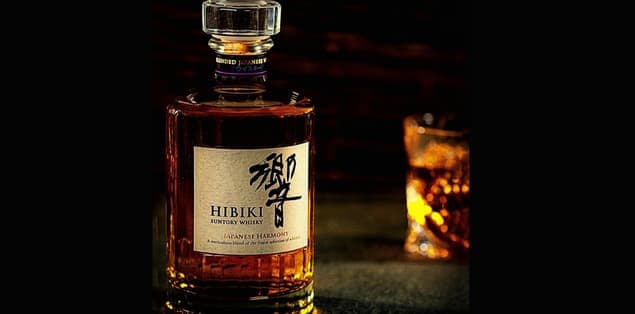
Japanese whisky is made from malted barley, just like Scotch whiskey, and aged in oak barrels like Scotch whiskey. Makers produce both whiskies from the same ingredients. The kind of wooden barrels used in the production of a spirit may vary widely depending on the distiller, but examples include
- Wine casks
- Sherry casks
- White oak casks
- Spanish oak casks
- Bourbon storing barrels
What Is Jameson Irish Whiskey Made Of?
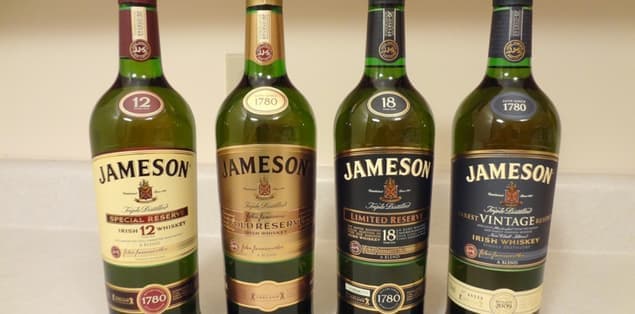
Maize, barley, and Irish water from the Dungourney River, situated adjacent to the distillery, are the major ingredients in Jameson. The distillery is also present in the vicinity of the river.
It is a mixture of grain and pot still whiskey produced in Ireland.
Manufacturers triple-distill it for the distinctive silkiness that it’s known for. They go through four to seven years of aging in bourbon and sherry barrels.
What Is Canadian Whiskey Made Of?
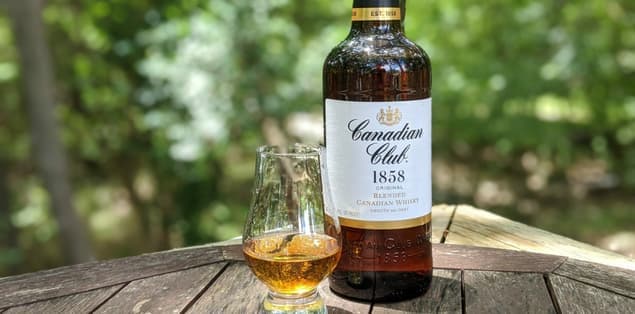
It is common practice to use a variety of grains in the production of Canadian whiskey, including maize, rye, and malted barley. However, in contrast to Bourbon and many other types of whiskey, each distinct grain variety’s fermentation, distillation, and aging processes are often carried out in isolation. However, since makers don’t mix them until just before bottling, the quantity of rye whiskey that goes into each blend may have a very broad range of concentrations.
What Is Crown Royal Whiskey Made Out Of?
The manufacturing of Crown Royal requires 3,400,000 liters (900,000 US gallons) of water that the limestone beneath the lake naturally filters. Each day, the production of Crown Royal uses 10,000 bushels of rye, corn, and barley, all of which makers source from the province of Manitoba and the provinces surrounding it.
They keep the whiskey in a total of 1.5 million barrels, spread over 50 warehouses on a land area of 5 acres (2 hectares). After that, it is bottled and mixed in Amherstburg, located in Ontario.
In addition, the manufacturer made Crown Royal in Waterloo, Ontario, right up until the distillery shut down operations in 1992.
What Is Rye Whiskey Made Of?
Rye and malt mash.
To comply with the legislation, Rye whiskey in the United States must have a rye mash that contains at least 51% rye grain. (Most of the time, maize and malted barley are the other components included in the mash.)
Makers mature it in charred, new oak barrels after being distilled to a maximum of 160 proof in the United States (80% alcohol by volume). The whiskey may have an alcohol content that is no more than 125 proof when they put it into the barrels (62.5% abv). It is possible to further categorize rye whiskey as “straight,” just like in “straight rye whiskey .”For example, suppose the makers have aged the beverage for at least 2 years but haven’t combined it with other kinds of spirits. In this case, “straight rye whiskey” refers to rye whiskey that we can classify as “straight.”
What Is Whiskey Sour Made Of?
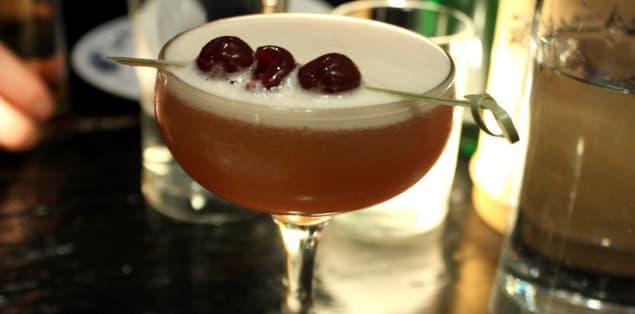
Whiskey, lemon juice, sugar, and egg white are the original ingredients used to make a Whiskey Sour. Bars use egg white because it mellows the whiskey’s sharp taste and contributes to its velvety consistency. In modern times, you do not require the egg for a Whiskey Sour, and it is usual practice for establishments to serve them without egg white.
Give it a go, though, if you are interested in experiencing the drink in its first iteration and adding some protein to your diet simultaneously. When utilizing egg white, it is important to first “dry shake” all the components, mixing them without ice and then repeating the shaking process with new ice. This expert move integrates all of the components into a whole unified product.
What Is Fireball Whiskey Made Of?
The Sazerac Company creates Fireball Cinnamon Whiskey by combining Canadian whisky with cinnamon flavors and sweeteners and then bottling the mixture under the Fireball brand. Its base is Canadian whiskey, and other than that, the flavor is quite similar to that of a candy made by Ferrara Candy Company and given the same name, “Atomic Fireball” candy. It has an alcohol by volume content measuring at 33%.
What Is Jack Daniels Whiskey Made Of?
Jack Daniel’s makes its whiskey following the formula that founder Jasper Daniel created. It is based on a mash made of rye, malted barley, and maize in the proportions of 12%, 8%, and 80%, respectively.
Rye is native to some regions of Canada, but corn and barley are more common in the United States. They keep the grain in large silos; there are eight dedicated to the storage of maize, two for the storage of rye, and two more for the barley.
What Is Scotch Whiskey Made Out Of?
Makers need to produce Scotch whiskey using malted barley, the principal component of Scotch whisky, in addition to water and yeast. It is acceptable for Scotch distillers to use coloring made from other types of whole cereal grains.
What Is Bourbon Whiskey Made Out Of?
Manufacturers must make Bourbon from a mash that comprises at least 51% maize. However, a bourbon mash would often have at least 70% corn, 15% rye, and 15% malted barley.
For the American Bourbon Association to call a whiskey Bourbon, makers must distill it from a mash of at least 51% maize. The whiskey needs to meet the requirements of this category. The Bourbon’s signature sweetness comes from the maize used in its production.
Final Words – What Is Whiskey Made Of?
Whiskey is a kind of distilled liquor that you may make from several different cereal grains, such as barley, maize, rye, or wheat. Makers achieve a minimum of 40% alcohol by volume (ABV) after they have matured the beverage in wooden barrels. People love to drink whiskey all over the globe.
Makers make whiskey of only a few basic components combined.
Several varieties of whiskey may typically be recognized from one another based on their region of origin, kinds of grain, method of mixing, or length of age. There is corn whiskey, Tennessee whiskey, single malt whiskey, malt whisky, and so on.
